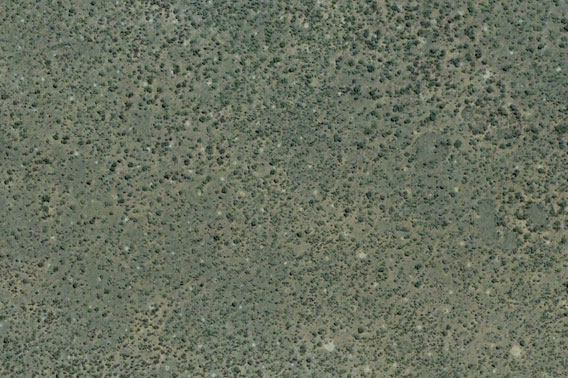
The woody savannah of Gorarezhou National Park as seen by Google Earth.
A new study in mongabay.com’s open access journal Tropical Conservation Science found that Lebombo ironwood (Androstachys johnsonii) forests are showing signs of decline due to elephant damage and fires in Zimbabwe’s Gonarezhou National Park. The Lebombo ironwood is the only tree in the genus Androstachys.
Surveying Lebombo ironwoods in three different soil types, the researchers found that “trees occurring in all the three soil strata were to some extent damaged by elephants and showed evidence of past fires”. Many of the trees are therefore unable to grow to their maximum height of 15 meters.
According to the study large Lebombo ironwood withstood elephants and burning better than immature trees. Trees on hilltops or rocky outcroppings also showed less elephant damage. Importantly, researchers also found that Lebombo ironwood individuals were capable of resprouting after suffering damage.
“This study has shown that A. johnsonii woodland in GNP is being transformed into low-density and shorter woodland,” the researchers write. They suggest longterm monitoring of the Lebombo ironwood woodlands, as well as further on the species’ ability to withstand impacts.
During their survey, the scientists cataloged 41 species of woody plants from 1,258 individuals in Gonarezhou National Park. Fifty-eight percent of the trees showed fire damage and 43% elephant damage. Tree diversity was highest in areas where Lebombo ironwood.trees were damaged.
“These results are in line with earlier studies in the Southern African savanna ecosystem,” write the authors. “High species composition in areas of high disturbance can be attributed to the fact that frequent fires destroy trees and create gaps that serve as niches for invasion by other species.”
CITATION: Edson Gandiwa1, Gift Chikorowondo, Patience Zisadza-Gandiwa1 and Justice Muvengwi. Structure and composition of Androstachys johnsonii woodland across various strata in Gonarezhou National Park, southeast Zimbabwe. Tropical Conservation Science Vol.4 (2):218-229, 2011.
Related articles
Slaughtered elephant served up at Zimbabwean rally with president
(10/12/2010) On the menu at the most recent rally for the Zimbabwe African National Union Political Front (ZANU-PF): 3 African buffalo, 3 elephants, and a lot of smaller game according to SW Radio Africa. Attended by Zimbabwe’s President and founder of ZANU-PF, Robert Mugabe, the rally also celebrated the opening of the Women’s Celebration Bank.
UN official: Zimbabwe security forces poached 200 rhinos
(02/14/2010) Last week the secretary of the UN Convention on International Trade in Endangered Species (CITES), Willem Wijnstekers, announced that security forces in Zimbabwe had poached approximately 200 rhinos in a two year period. He did say how many elephants were poached by security forces.